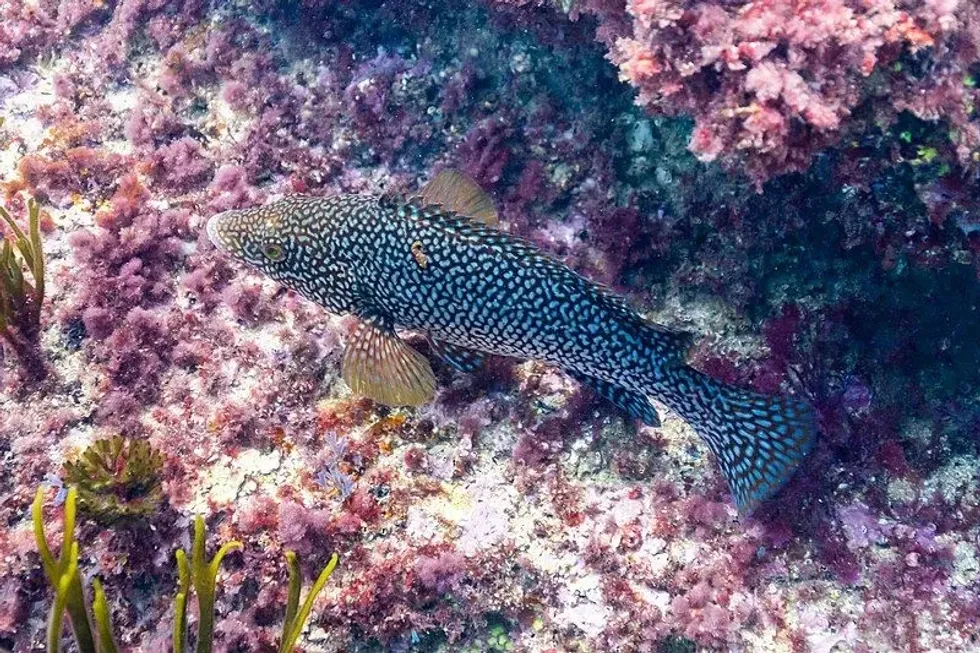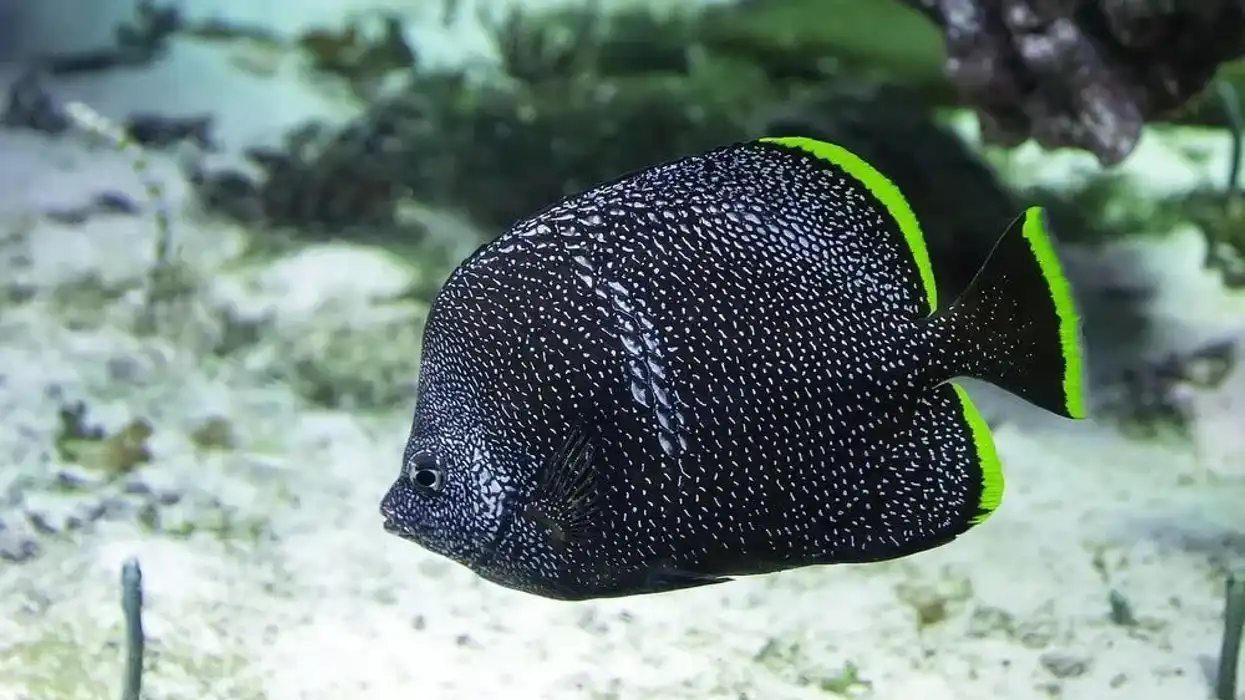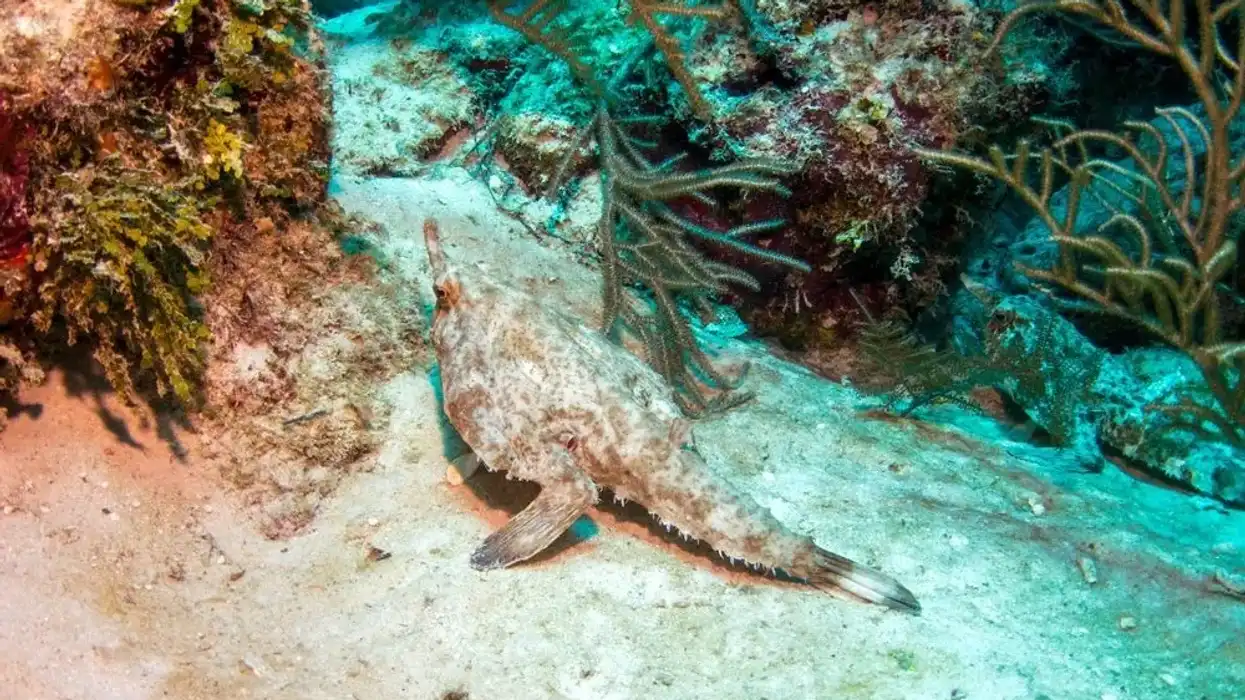The ballan wrasse species is a marine ray-finned fish from the family Labridae and is scientifically known as Labrus bergylta. Wrasse are marine fish that are mostly found in the ocean and tropical waters.
It is a protogynous hermaphrodite like all other wrasse fish species, where all of them first start their lives biologically as a female and some of them turn into a male as they grow. The largest of this fish species was found in the UK waters.
They are predatory in nature and feed on small fishes, and live close to the shore, in the kelp forests. Their thick lips are what make them recognizable from other fishes.
This wrasse species of fish is quite unpopular as a delicacy. They prefer temperate waters and are found in depths of up to 50 m underwater.
The Labrus bergylta habitat is distributed across the ocean from the Indian to the Eastern Atlantic Ocean and along the Pacific Ocean. They are rarely commercial fisheries, and there are no laws that indicate their protection. They are large in size, along with a heavy body with a relatively large head.
Their color can differ from species to species. The adults, as males are generally large in size.
If this aquatic species interests you, keep reading and also check out rockmover wrasse and exquisite wrasse facts.
Ballan Wrasse Interesting Facts
What type of animal is a ballan wrasse?
A ballan wrasse species is a type of ray-finned fish.
What class of animal does a ballan wrasse belong to?
The Labrus bergylta belongs to the Actinopterygii class of animals.
How many ballan wrasse are there in the world?
The total number of the Labrus species is unknown, and not much attention is given to it. They are present across most parts of the ocean.
Where does a ballan wrasse live?
The Labrus bergylta species generally live in the ocean, tropical waters, and temperate waters. They require a suitable water temperature for their survival and well-being. They live among the rocks, reef, and seagrass or weeds underwater to safeguard themselves from predators.
What is a ballan wrasse's habitat?
This fish species can be found in the underwater rocks of the Pacific Ocean, Eastern Atlantic Ocean, and in other regions where the oceans are distributed.
Their habitat consists of normal water temperature, and there have been records of their presence in the Mediterranean Sea, but it is not confirmed and questionable since they may have been misidentified with the brown wrasse. They have a great presence in most regions.
However, climate change or climate degradation is a major concern for their habitat, since it can cause loss of habitat and disrupt their environment.
Who do ballan wrasse live with?
The Labrus bergylta are solitary and generally seen alone, or even if they are seen in groups, it is not more than three. They hunt, live, and survive alone.
How long does a ballan wrasse live?
The ballan wrasse (Labrus bergylta) has a lifespan of up to 29 years in the wildlife. If they have a habitat in waters with good temperatures, along with protection from predators, they can live for a long time. Most of them, unless eaten by predators, live to 20 years and more in general.
How do they reproduce?
The Labrus bergylta Ascanius fish species are generally female by birth for their first 4-14 years, and later as adults, some of the dominant fish transform into male, and they are larger in size than the lifelong females. The females can lay up to 1000 eggs, but not all survive since some get eaten by predators.
Spawning occurs in the spring season, and peaks in May.
The female scatters their eggs when laying them, and hatching takes place when the larvae are only 3 mm in length. The eggs usually hatch between five to seven days and start feeding on algae and crustaceans as they grow.
What is their conservation status?
This Labrus marine fish conservation status is Least Concern and not much attention is given to their population, since they have a stable population since they are not really fished for commercial purposes.
Ballan Wrasse Fun Facts
What do ballan wrasse look like?
This marine fish is a heavy-bodied wrasse with a small mouth and thick lips, strong conical teeth, and a broad head. There are no external variations between the sexes, and they both look similar, but coloration varies.
The head, body, and fins are often reddish or brown-red, with white, gray, greenish spots with irregular vertical dark stripes. They have a short anal fin and three spines.
The young ones are generally bright emerald green in color, which transforms to their original color as they grow into adults.
These marine fish have the capability to grow up to 26 in (66 cm). They have been consumed as a delicacy in certain parts of the world but fishing them does not occur often since it is not a very popular marine food menu among the locals.

How cute are they?
The Labrus bergylta Ascanius look good and attractive, but many people agree that they look like poisonous fish with their color distribution on their bodies. But, these fish species are colorful and more reddish-brown to look at and are amusing to watch.
How do they communicate?
Their means of communication are unknown since they are aquatic beings. However, they do not look very interactive among themselves since they are mostly seen alone.
How big is a ballan wrasse?
The ballan wrasse (Labrus bergylta) have a body length of 26 in (66 cm), which is five times bigger than an Atlantic mackerel, which is only 16 in (40 cm) in length.
How fast can a ballan wrasse swim?
Not much detailed information has been acquired of the Labrus bergylta since they were studied in recent times. Their swimming speed is unidentified, but it is believed that they may have a similar speed to the salmon fish.
How much does a ballan wrasse weigh?
The ballan wrasse is a fish species that weighs around 9.7 lb (4.4 kg).
What are their male and female names of the species?
The male and female species do not have separate identification or description. They are both known as ballan wrasse fish.
What would you call a baby ballan wrasse?
The young ballan wrasse is generally known as a larva or fry.
What do they eat?
The ballan wrasse fisheries feed on crustaceans, shrimps, small fishes, algae, seaweed, shellfish, and other fishes that fit their mouth. They are omnivorous in nature, and their diet consists of both plant-based and meat foods.
Are they dangerous?
These marine fish species do not pose any danger to humans, and they are generally harmless.
Would they make a good pet?
They are not suitable as pets as they are wild animals.
Did you know...
These fish species are not generally in fisheries, and fishing of these fishes occurs rarely unlike other fish species. Some genomic tools are used for the ballan wrasse farming.
Are all wrasse born female?
Wrasse fish species are sexually dimorphic, and they are capable of changing their gender or sexes as they grow to adults. At birth, not all of them are born females, some are born males too.
However, their gonads contain both female and male sex tissues, and then sex change can occur as one outgrows the other. Those dominant ones as adults usually transform into males.
What is the most expensive fish in the UK?
Wrasses are the most expensive fish in the UK since they have never been prized for their taste or as a delicacy, although they can be found plentiful around Britain's coast. They are expensive due to their ability to eat parasites and provide more eco-friendly fish farms.
They are also known as cleaning fish, and their price has peaked at more than £50,000 per ton.
Here at Kidadl, we have carefully created lots of interesting family-friendly animal facts for everyone to discover! Learn more about some other fishes from our Chum salmon fun facts and convict cichlid interesting facts pages.
You can even occupy yourself at home by coloring in one of our free printable wrasse coloring pages.










